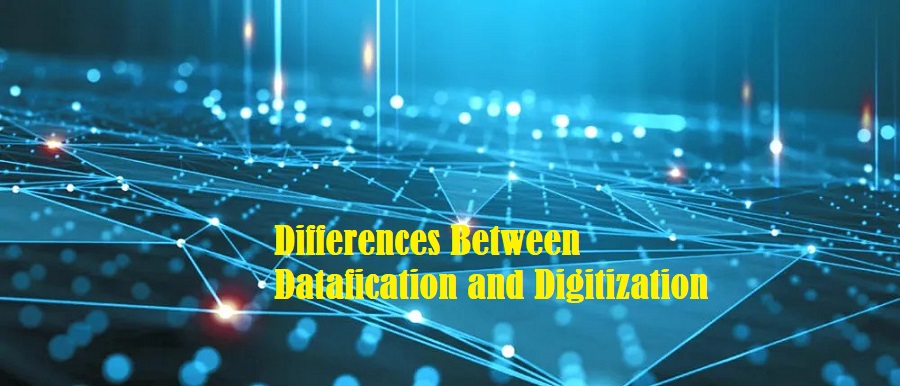In today’s digital world, terms like “datafication” and “digitization” are frequently used interchangeably, confusing their meanings and distinctions. However, there are some essential distinctions between datafication and digitization that should be understood. In this article, we’ll investigate these distinctions and how they influence our lives.
Introduction to Datafication and Digitization
Datafication is the process of digitizing analog data into digital format, making it simpler to analyze, store and process. It involves translating physical objects or processes into digital information, which can then be analyzed using various algorithms and machine-learning techniques.
Digitization, on the other hand, is the process of converting analog information into a digital format that can be stored, managed, and accessed electronically. This involves turning analog elements such as text, images and sounds into manageable digital data that can be quickly managed and searched.

What Are the Primary Distinctions Between Datafication and Digitization?
Data Type
Datafication and digitization differ in that the type of data involved is different. Datafication involves the conversion of physical objects or processes into digital information, while digitization involves the transformation of analog information into digital form.
Purpose
Datafication primarily serves the purpose of analysis, where digital data generated is utilized to gain insights and make informed decisions. Digitization, however, serves to store, retrieve, and manage digital information.
Level of Processing
Datafication necessitates a high level of processing, employing complex algorithms and machine learning techniques to analyze digital data generated. Digitization, however, takes on a lower degree of sophistication; any generated digital information is simply stored and managed.
Application
Datafication is widely employed in fields such as finance, healthcare and marketing, where the analysis of large datasets is essential for decision-making. Digitization also plays a significant role in education, libraries and archives where storage and retrieval of information are crucial.
Impact on Society
Datafication has had a profound effect on society, leading to data-driven decision-making and the emergence of advanced technologies like artificial intelligence and machine learning. On the other hand, digitization has had more of an incremental effect – making information more accessible and manageable.
Datafication and Digitization Examples
Datafication
- Smart homes that use sensors and machine learning algorithms to automate tasks and boost energy efficiency
- Health apps that monitor exercise, sleep, and diet provide personalized recommendations and insights.
- Financial institutions that utilize data analytics to detect fraud and make investment decisions rely on this knowledge for accurate predictions.
Digitization
- Libraries and archives that digitize books, documents, and other materials in order to make them more accessible to the public
- Online education platforms offer digital courses and resources around the world.
- Digital art museums provide access to high-quality digital copies of renowned works of art.
Conclusion
Datafication and digitization are distinct processes with distinct purposes and applications. Datafication involves the conversion of physical objects or processes into digital data for analysis, while digitization transforms analog information into digital form for storage and retrieval. Recognizing these distinctions is increasingly important in today’s digital age, where both processes play a vital role.

